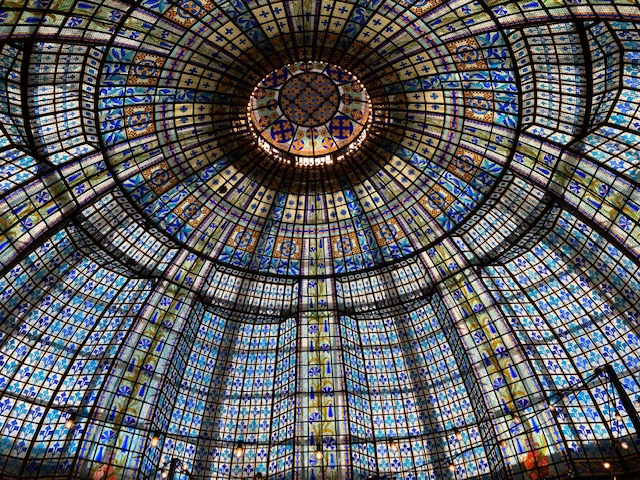Around the topic of energy there many ethical issues that urgently need sorting out. Carlos Diaz-Rodriguez and co-authors have provided a sound basis for such ethical considerations. To leave the disastrous path of energy provision through polluting fossil fuels and, additionally very risky, nuclear energy, they propose a departure from the principles and values that have guided us into a dead end. In their opinion we suffer from a mistaken belief to be able to control in extremis, through scientific methods, the forces of nature. In ethics this mistaken belief has roots in religious beliefs that mankind is mandated to make the earth subordinate to its own will. The authors propose to overcome this old paradigm with a new paradigm. This builds on the (1) “precautionary principle”, (2) justice as equity, (3) protection and the (4) principle of responsibility.
Most European readers of philosophy and social science are familiar with these principles. The virtue of the paper is to expose and juxtapose these principles in a clear format and a stringent application to the ethics of energy (production as well as consumption of it).
The precautionary principle is part of the European treaty on the functioning of the European Union Art. 191, but its implementation on energy issues reveals that it is a tiger without teeth. Younger generations across the globe are right to claim a more forceful implementation of this principle.
The perspective of justice as equity is bringing in later born generations as well into the balance costs and benefits of “cheap energy today” but huge costs of dismantling, repairing, stocking deferred to the future.
The protection principle refers to the loss of biodiversity and exploiting resources in areas of world heritage, for example.
The principle of responsibility goes beyond the judicial and economic principle that the person, company or state causing damage through exploitation of resources, and in producing energy with it, has to pay for repairing those damages.
As this is hard to achieve in real terms, there is an urgent need to reiterate the responsibility principle at all levels. Despite the inefficiencies of legal systems, the international legal order in particular, there is no way around than to insist on responsibility from the individual behaviour, company strategic goals as well as objectives set by nation states and international organisations. The Paris agreement and all COP XY conferences only prove the fact that irresponsibility continues to be a guiding principle.
Maximalist positions as well as continuing like decades before is failing people on earth. Organising a discourse on these ethical issues is a first step, but we have to be able to address negationists as well.
The missing principle so far is the solidarity principle. Without a firm commitment to intergenerational and international solidarity we shall remain unable to solve the ethical puzzle. It is high time to organise solidarity related to the field of energy.
(Image: “The fallen tree of knowledge” by Fabrice Samyn. Exposition in Yerres, France 2021-11) 
Energy Food
For more than a decade now researchers have shown the link between energy prices and food prices. At first sight this might seem surprising. In traditional or romantic associations with growing food, there is no link between the cost of energy and food production. Growing crops in your garden does not need more than sunlight, soil and water. Yes, that was long ago. Industrial production of food is heavily relying on energy to heat, feed and water plants or animals. Additionally, the supply chains have become far more distant, which increases the CO2 footprint even further. Therefore, it is no longer surprising that a great number of econometric studies confirm the close link of energy prices and subsequent pressure on food prices. This is not restricted to Europe, but has reached global contamination.
Enjoying seasonal local food is a double catch solution. You grow according to local weather conditions and use traditional conservation methods, if the crop is exceeding your demand at that time. Providing heating for animals to increase productivity or quality of products appears to be one of the most wasteful ways to further increase the spiralling up of energy and food prices.
In agricultural science there is a lot of research into the “energy intake” of animals to better grow or produce more milk etc. This is the expensive intermediary step using energy to produce energy intake for animals rather than humans. It is surprising that we take so many years to address these well-known linkages that have turned to serious problems after Russia’s war on Ukraine. Agriculture and farmers can be part of the solution rather than a problem themselves, if the link of energy consumption and food prices is taken seriously. 
Nuclear War
In the last few years we have witnessed a new surge in the investment in nuclear energy on the global level (IEA). Ever since the foundation of the initiative “International physicians for the prevention of nuclear war” in the 1980s, there have been relentless reminders of the devastating effects of such a war. In 2023 we are all aware of the real risk of attacks on the biggest nuclear power plant located in Ukraine. Nevertheless we continue to invest heavily in power plants that constitute a massive risk at times of war between irresponsible nations. Besides the publication of many high quality papers in The Lancet there is regularly space to keep the awareness of the dangers of nuclear war at a high level. Too many politicians shield themselves from dealing with such realistic dangers in the interest of supposed cheap and save energy for all. Both is no longer the case. Nuclear energy is expensive and unsafe in peace and horrible in war times. We cannot afford to abstract from these rising risks. The hype about anything nuclear like in the 1980s is grossly displaced (image of book below).
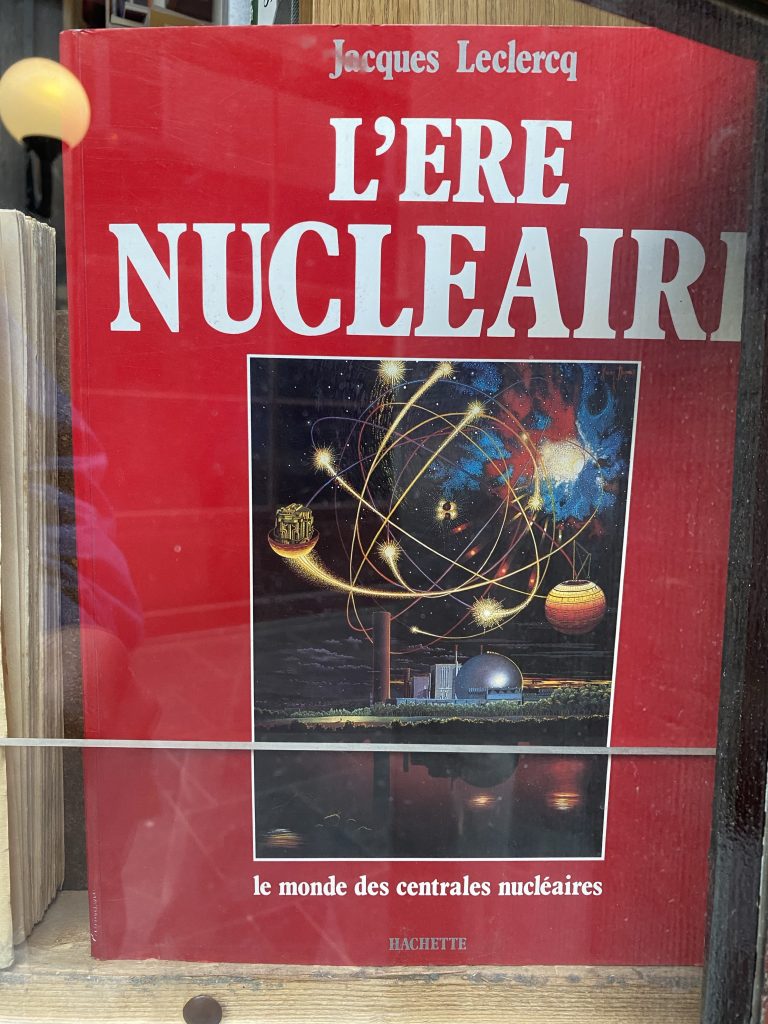
Car Energy
The car industry sells more electricity-driven than diesel-cars for the first time in July 2023 (ACEA, 2023). This is a turnaround, considering the large share of the most polluting cars in the EU. It is difficult to see this as good news as newly sold diesel-cars will be around and polluting for many years to come. Hybrid cars are an own category and full of heavy additional material that allows 2 types of mobility. Tax reductions to push hybrid cars into the EU-market were very expensive for tax-payers and increasing inequality through co-financing rather expensive cars. 36,3%, the largest share, are still petrol-driven cars, with little awareness for further CO2 reductions. This is the slow evolution of the energy consumption pattern of the automotive industry in Europe.
On the energy production side there have been substantial efforts to invest in clean energy, too (IEA, 2023). With the world burning at several places already it is, after all, good news that investment in solar energy production on a global level has reached the level of investment in fossil fuels. Major drivers of this evolution are 1. China, 2. Europe and 3. The U.S. A. (unadjusted for population size) according to this investment report. Grids and storage investments rise equally to new heights, reflecting new distributional aspects of power provision within and between countries. We are in the race against the burning of our planet due to our shameless use of fossil fuels, worst in form of flying small jet planes. Besides the large company and state investments we need the spending and investment power of the masses to speed up the end of the fossil fuel age of polluting dinosaurs. Please do not replace one dinosaur (coal, oil, gas) with another one (nuclear). Too big to fail is maybe an economic rationale, but it does not withstand natural disasters (Fukushima), human failure (Tschernobyl) or war activity (Saporischschja).
(Figure source: IEA, Power investment in billion US$, 2019-2023, IEA, Paris https://www.iea.org/data-and-statistics/charts/power-investment-2019-2023.
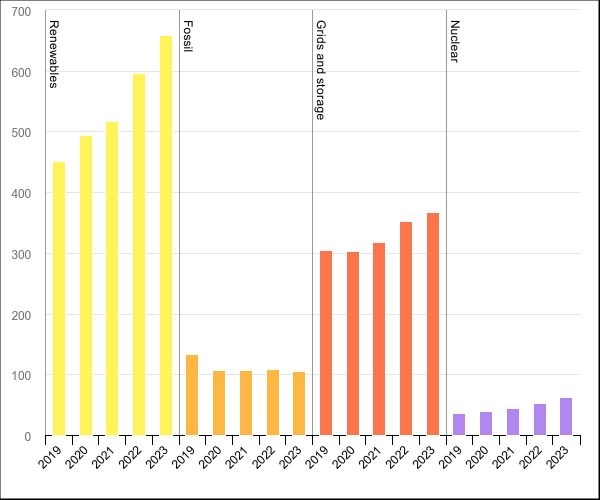
Photovoltaik
Eigentlich ist die Photovoltaik eine alte Technologie. Seit 1954 werden Solarzellen, damals noch mit geringerer Effizienz und teuer, produziert und benutzt. Da hat sich viel verändert und nicht zuletzt durch die sogenannten Balkonkraftwerke sind Solarzellen zu einer weltweit beliebten, rentablen Alternative geworden. Dächer eignen sich wegen ihrer Schräge und oft der Ausrichtung bestens zum Aufstellen von Solarzellen. Renovationen und Neubauten sollten diese Art der Energieerzeugung unbedingt in Betracht ziehen.
Wegen Olympia 2024 in Paris wird dort gerade viel städtische Infrastruktur erneuert. Der “Gare de L’Est” wird beispielsweise von Frankfurt aus mit TGV und ICE angefahren. Da kommen viele Geschäftsreisende und Touristen aus Europa und der ganzen Welt an. Ein Blick auf die Dächer des “Gare de L’Est” von dem Fußweg zum Gare du Nord zeigt viel verpasste Investitionen. Ein Meer von Dächern liegt brach, bestens geeignet zur Installation von Photovoltaik. Das könnte eine Menge an Energie vor Ort produzieren, die die Züge dann direkt benötigen. Mehr Ökostrom statt Atomstrom kann einfach sein. Es fehlt nur oft der Wille. Nachhaltigkeit und Olympische Spiele ist ein ganz eigenes Thema, nicht nur für Paris 2024. 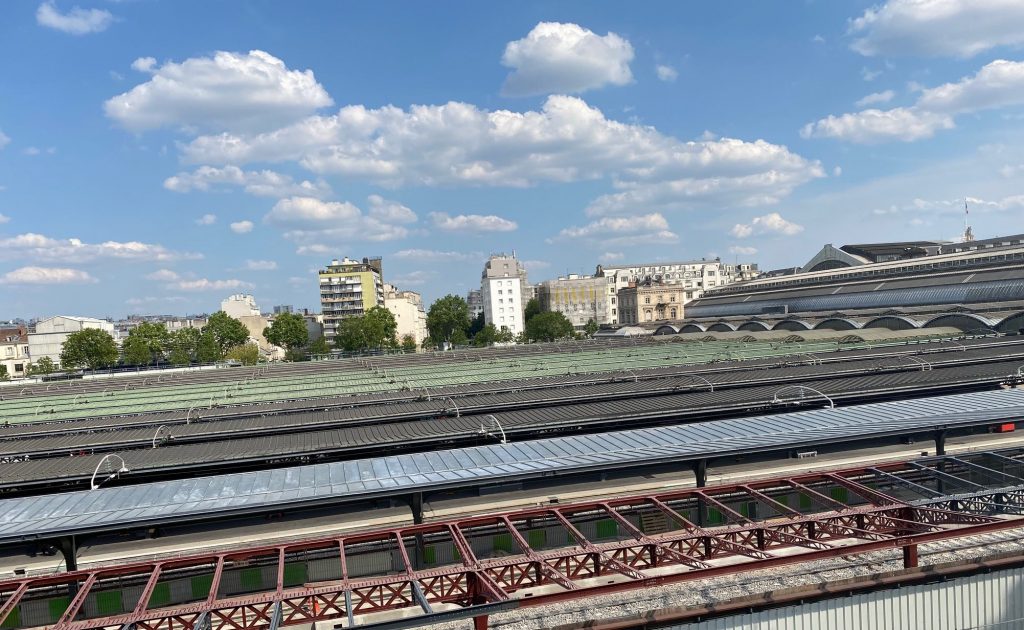
Gaslager
Der Gaspreis (TTF in Amsterdam) ist zum Ende Mai 2023 auf ein Tiefstwert von 23,50 € pro Megawattstunde zur Auslieferung einen Monat später gefallen. Der Unterschied zum Höchstpreis von ca 300 € übersteigt die Erwartungen der meisten Kunden. Das sind die Spekulanten und Zwischenhändler. Der Preis für die Endverbraucher bewegt sich weniger. Kartellbehörden in Europa müssen wachsam bleiben damit die Endverbraucher nicht zusätzlich zur Kasse gebeten werden. Gaslager für zivile und militärische Zwecke wurden vom Bund billig vor Jahrzehnten verkauft (Privatisiert) und sind jetzt wieder zu einer unverzichtbaren Infrastruktur geworden. Der Kapitalismus fällt immer wieder in seine eigenen Fallen durch exzessive Volatilität. Öffentliche Infrastruktur braucht langen Atem und sollte dazu dienen, die übertriebene Spekulation mit der zeit Grundversorgung der Bevölkerung zu vermeiden. Gaslager, Öllager, Wasserspeicher und Stromspeicher bei zentraler Stromerzeugung gehören dazu. Dezentrale Lösungen verstärken die Resilienz und Souveränität weiter. Europäische Solidarität hilft enorm, diese Herausforderungen zu meistern. Wichtig ist nicht nur der Einkaufpreis, sondern der Preis vor und nach Steuern sowie Unterschiede zwischen Industrie und Haushalten (Beispieldaten OECD 2014 für Jahr 2012, IEA Gas Market Report various years). Die ökologischen Sauereien rund um die Shale-gas Förderung in den USA haben uns wohl geholfen, besser durch die künstliche Verknappung von Gas für Europa durchzukommen durch die Erhöhung der gesamten Fördermenge. Ein weiteres “worst case szenario” zur Bekämpfung von Preisschocks. (Paper Link) 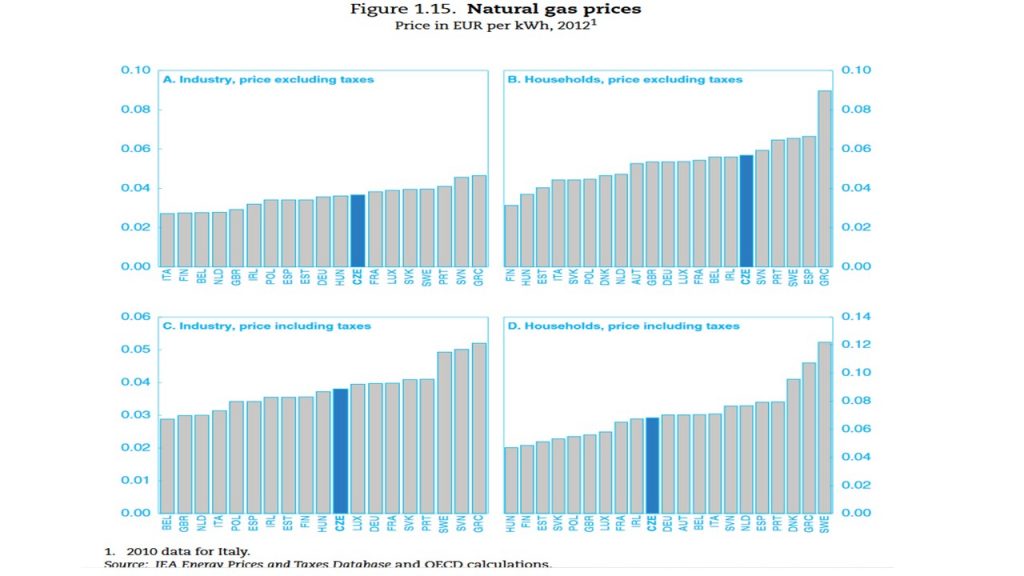
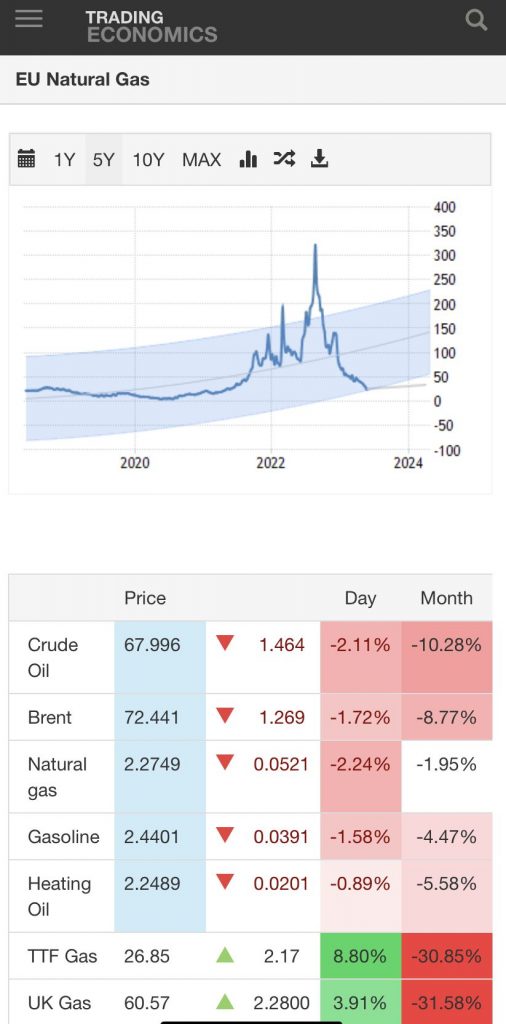
Repair 3
Repair is our new mantra. Think of repairing in all domains as of now. Nature is showing us the way how to repair in many ways. Culture is also embracing the shift towards repairing as caring. If we really care about our planet, and there is no planet B, we shall have to repair in many more domains. We are used to repair bicycles, cars, roofs, windows etc. Repairing is never boring. You can improve the performance of a device or building by repairing it, even with relatively small budgets. Isolation of buildings is a good example of investing in upgrades through repairing. Rather than throwing away a functioning heating system repairing it with an energy saving device is enhancing its performance and produces fewer emissions in the short run. Heat pumps are the way forward for new installations. Shifting a sector, heating with gaz, to ensure longer lasting repair and improve options would save a lot of raw materials and CO2 as well. The construction sector has repair work almosts in its DNA, the energy sector will have to make that shift as well. Dare to repair. 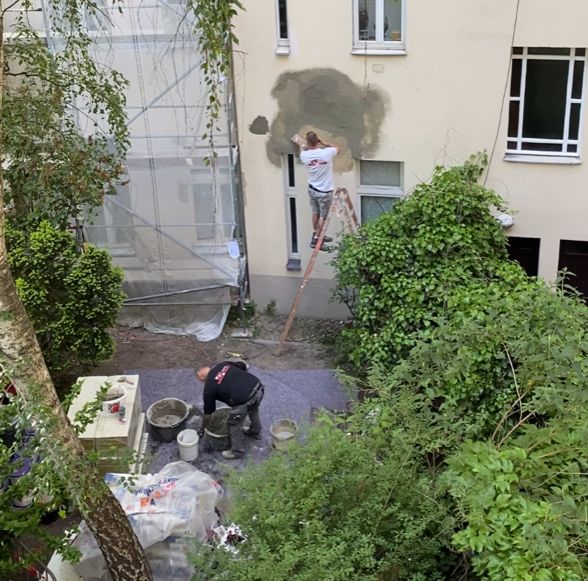
De-risking
Risks are all around us. Risk is the spice of life. True, but this might be an elitist concept of life or business. Survival of the fittest or the best equipped to take risks might be the consequence. After the 3 crises, financial, covid, energy, we have a new impetus to thrive for de-risking. Certainly, concerning our health, we are aware that prevention is key to fight a pandemic. In order to stem an energy crisis, most countries start to rethink their energy mix and achieving more energy autonomy is a major step to shield against risks of delayed delivery or commerce with belligerent states like Russia. De-risking is key in supply chains for industries (automotive production, microprocessors) as well as service providers (cloud services, care givers) just as well. Mariana Mazzucato (UC London) urges us to develop a new narrative to accompany the transformation of our production and service provision models. Mazzucato advocates to learn from lessons from the ground of how to proceed in the best way. Copenhagen is a good starting point to observe how a metropolitan city manages the greening and decarbonisation of a city. It is important to not only target single policies but the coherence of several policies and approaches. In my view de-risking means for Germany and the EU to shield energy systems from foreign, malignant interference. Only local production of energy and nearby consumption of it will ensure the de-risking of energy provision and consumption. Let us start with massive investments in rooftop solar or small wind turbines. Nobody complained about millions of ugly television antenna all around us. Solar cells on balconies contribute to a basic local electricity supply, difficult to target millions of solar cells instead of a single huge and horrifically dangerous nuclear power plant. At the same time ,we reduce dependency on monopoly or oligopoly structures that develop their own agenda (Too big to fail, remember those?). I prefer the reverse statement. Because they are so big, they are doomed to fail and, therefore, fail us sooner or later. The Forum New Economy offered an open and accessible platform for exchange of ideas. That’s a good starting point to address de-risking. Reducing Risk is in the subtitle of Rebecca Henderson’s Chapter 3 on “Reimagining Capitalism” (short Review), but I would like to add the business case for household production of energy for de-risking supply failure and exploitation of consumers through excessive profit margins as a prosumer business case. 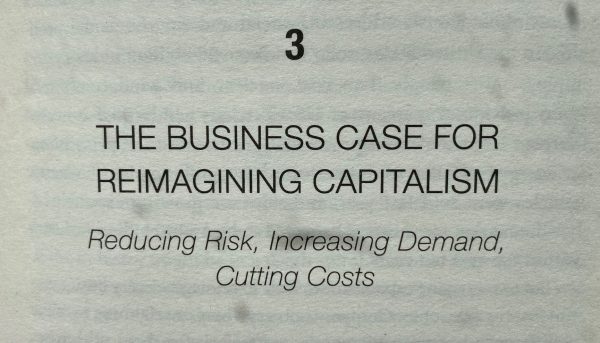
Fukushima
Ein Bericht über die Explosionen von 2 Blöcken des Kernkraftwerks Fukushima lassen uns Menschen ziemlich dumm aussehen. Wir glauben, alle möglichen katastrophalen Ereignisse vorhersehen zu können und werden doch wieder des besseren belehrt. In der Buchserie der Presses Universitaires de France (PUF) erschien in 2022 “Un récit de Fukushima” in dem der Direktor des Atomkraftwerkes vor der Untersuchungskommission berichtet, wie genau die verschiedenen Ereignisse Erdbeben und Tsunami mit der Verkettung von offensichtlichen menschlichen Fehlentscheidungen einhergingen. Planungsfehler, wie zu tief liegende Notstromaggregate, da rasch überflutet, sowie Kosteneinsparungen bei Vorsorge gegen als unrealistisch eingestufte Risiken (so starkes Erdbeben, Tsunami) haben die Katastrophe ermöglicht. Nach Tschernobyl haben wir nun Saporischschja fürchten gelernt. Das Atomkraftwerk Mykolajiw steht wohl als nächster Schrecken auf der Liste. 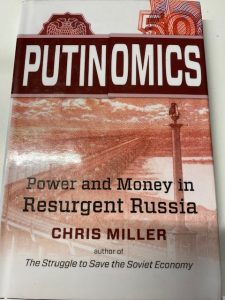 Neben Planungsfehler, Kostensparen und menschlichem Versagen kommt nun die Gefahr von Nuklearkatastropen auf die Liste des Kriegsarsenals. Nicht als Bombe, wie wir bisher annahmen, sondern als nicht schützbare Infrastruktur, die kaum zu verstecken ist. Der nächste Tabubruch ist realistischer geworden. Die Kosten für Abwehrraketensysteme neben jedem Atomkraftwerk wohl etwas teuer und eventuell ineffizient. Wer befasst sich mit derartigen verbotenen Gedanken? Die Schrecken des 21.-ten Jahrhundert könnten sich als noch schlimmer gestalten als wir zu denken wagten. Atomkraft: die Geister, die ich rief, ich werd’ sie nicht mehr los.
Neben Planungsfehler, Kostensparen und menschlichem Versagen kommt nun die Gefahr von Nuklearkatastropen auf die Liste des Kriegsarsenals. Nicht als Bombe, wie wir bisher annahmen, sondern als nicht schützbare Infrastruktur, die kaum zu verstecken ist. Der nächste Tabubruch ist realistischer geworden. Die Kosten für Abwehrraketensysteme neben jedem Atomkraftwerk wohl etwas teuer und eventuell ineffizient. Wer befasst sich mit derartigen verbotenen Gedanken? Die Schrecken des 21.-ten Jahrhundert könnten sich als noch schlimmer gestalten als wir zu denken wagten. Atomkraft: die Geister, die ich rief, ich werd’ sie nicht mehr los.
Also eine dezentrale Energieversorgung durch Wind und Solar mit 100.000-den von kleinen Anlagen, in Gärten und auf Dächern erscheint als realisierbarer Lösungsansatz. Warum sagt das kaum eine/r? “Everyday for future” its easy. Mehr grüne Energie für Frieden = Greenpeace mal anders.